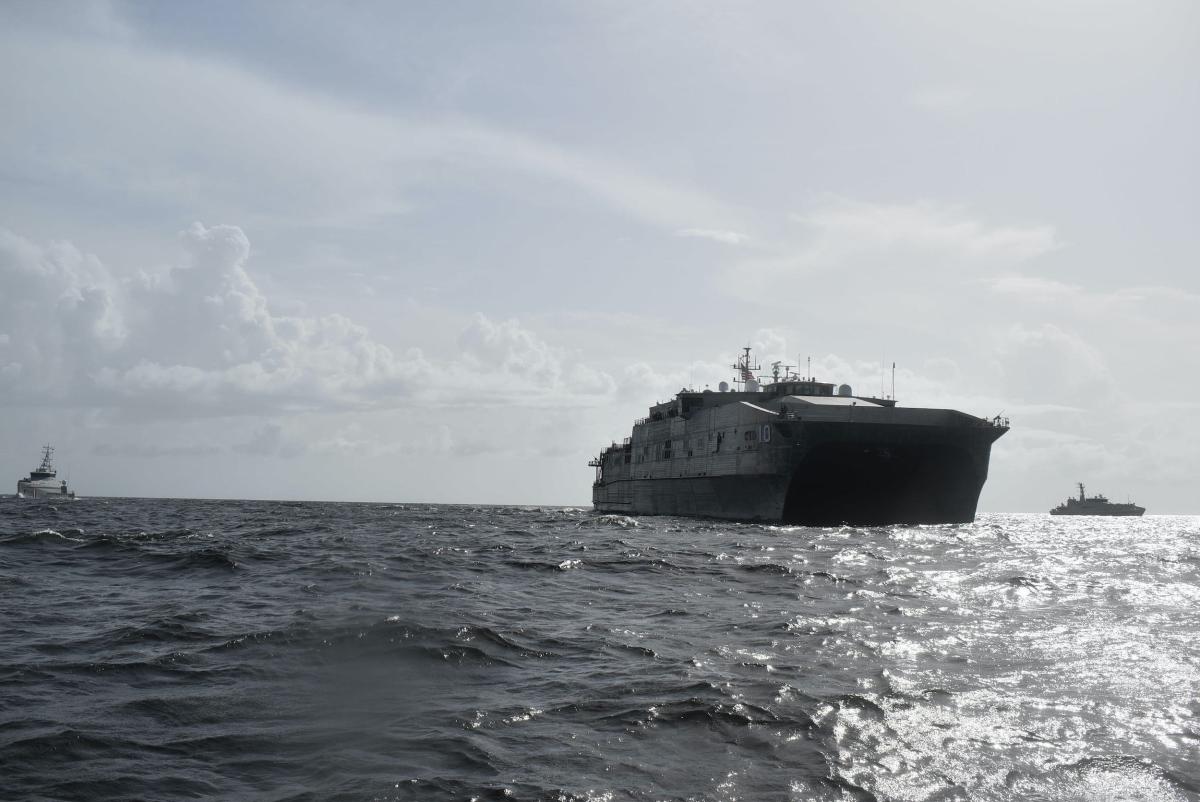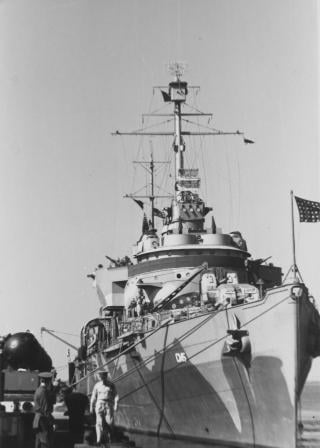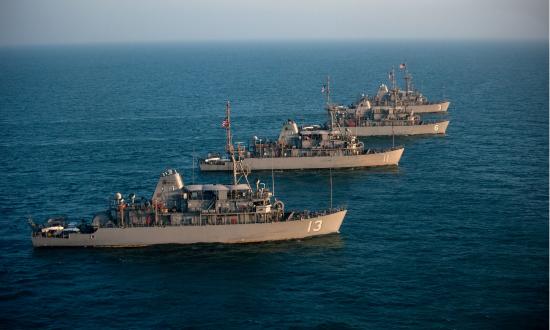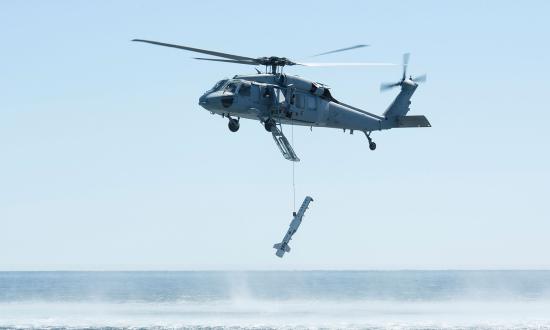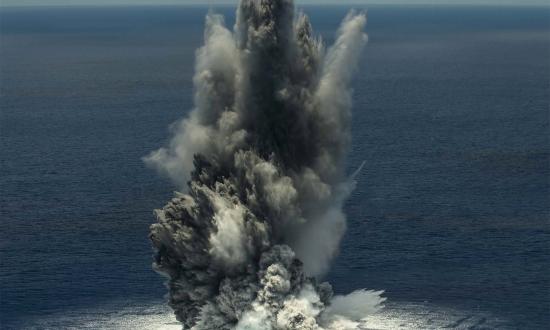In World Wars I and II, the U.S. Navy had specialized ships designed or adapted to lay mines. Offensive minelaying could prevent enemy warships from leaving port or vital supplies from arriving.
Ships capable of laying a tactically relevant minefield need the range and endurance to get where the mines should be deposited, a large internal volume to store the mines, and the ability to get them off the ship and into the water. It is no wonder that some of the ships adapted for the role were ferryboats, which can efficiently load and offload vehicles.
Many ferries operate on short distances and return to home port for fuel and maintenance. But others in coastal or regional services have sufficient endurance or can be modified to have adequate range to travel long distances and the speed to keep up with a task force.
This was certainly the case in World War I, when ships were used to create a massive minefield—the “North Sea Mine Barrage” blockade to keep German U-Boats from getting to open water. The Army Coast Artillery Corps was charged with establishing and maintaining defensive minefields in coastal waters and protecting U.S. ports and harbors. Many ships were introduced to the U.S. Army Mine Planter Service (AMPS) in 1918. Later, some of them would be turned over to the Navy.
The United States Shipping Board took control of four cargo ships from Southern Pacific Steamship Company in 1917, which together laid thousands of mines in the European theater. There are other similar examples.
Coastal cargo ships and ferries were used in World War II as well. The USS Salem (CM-11), Weehawken (CM-12), and Keokuk (CM-8) were commercial cargo ships that were taken into naval service as minelayers. They were useful in amphibious operations because they could also carry troops and cargo. Their large internal volume made them well suited to carry and discharge mines while underway.
It was dangerous work. The USS Miantonomah (CM-10) was a coastal cargo and passenger ship built in 1938 and converted to a minelayer for the Navy. She participated in several minelaying operations off the East Coast and in the Caribbean and European waters. She was sunk by a mine in 1943 off the French coast.
What the converted cargo ships lacked was speed, so the Navy converted 22 World War I–era Wickes-class and Clemson-class “four-piper” destroyers to destroyer minelayers. Later, more were converted, along with newer Alan M. Sumner–class destroyers that were built during World War II and converted to minelayers before joining the fleet as the 12 ships of the Robert H. Smith–class. Destroyer minelayers were faster than the converted ferries but were more limited in terms of the number of mines that could be carried.
During the Battle for the Solomons, U.S. minelaying destroyers helped stop the Tokyo Express. In the middle of the night on 6 May 1943, the USS Gamble (DM-17), Breese (DM-8), and Preble (DM-20) laid 250 mines in just 17 minutes in the Blackett Strait between Kolombangara and Kohhingo Islands, mines that sank the Japanese destroyer Kuroshio the next night and damaged two others—the Oyashio and Kagerō. When the Japanese ships called for help, destroyer Michishio was dispatched, but an Australian coastwatcher witnessed the rescue effort and the two damaged destroyers were finished off a day later by Guadalcanal-based torpedo bombers. The Michishio staggered home after suffering extensive damage.
Minelayers were often used for other missions, including carrying ammunition, tending nets, and serving as support ships for smaller craft.
Only one World War II–era ship was a built-for-purpose minelayer for the Navy. The 454-foot, 6,000-ton USS Terror (CM-5) was a large and well-armed cruiser minelayer capable of carrying about 600 assembled mines, with stowage for additional unassembled mines. She had the space and capability to serve as a flagship for mine warfare and other combat operations. Two other ships of her class were built (the USS Catskill and Ozark), but they were converted to the landing ship, vehicles (LSV-1 and -2, respectively) before joining the fleet. All three had a large internal volume of storage and a large stern gate at the fantail, ideal for offloading mines or vehicles, such as the Army’s six-wheel-drive amphibious vehicles (DUKWs), trucks, and Jeeps. Their top speed was about 20 knots. In practice, the Terror was mostly employed in supporting amphibious landings than planting mines, just like the Catskill and Ozark. Several similar ships were built as Monitor-class net layers (AN 1–4) but entered service as LSVs. All had significant interior storage volume and could rapidly transfer vehicles and material.
U.S. World War II submarines were able to lay mines covertly and were successful. They sank 27 ships and damaged 27 more.
Applying these Lessons Today
Mines are still deadly, and the mere suspicion of their presence can cause an adversary to drastically change plans. They are still relevant weapons and play a role in supporting distributed maritime operations. While submarines and aircraft remain the preferred method to lay mines, there are surface ships with the speed, volume, and stern gate or side access capability to get mines in the water.
Both littoral combat ship (LCS) variants have significant internal volume and speeds of more than 40 knots. Expeditionary fast transports (EPFs) also have a roll-on/roll-off capability and can achieve speeds of more than 35 knots. Although an auxiliary ship with a civilian crew, EPFs could be commissioned to serve as mine transports and minelayers. They can be outfitted with significant command-and-control capabilities to coordinate mining operations and support other minecraft.
To take the concept further, an EPF could be operated remotely to go into a dangerous area and lay mines, then return to have reembark her crew. A variant of the large unmanned surface vessel (LUSV) could carry mines. The future light amphibious warship (LAW), which is intended to carry troops, vehicles, and cargo, could also be operated remotely for the same purpose.
Mines are not new, nor are ships designed to deploy them. What is new is that fast, even stealthy manned and unmanned surface vessels can be configured to carry and deliver mines into a tactical area to complicate an enemy’s ability to wage war.



